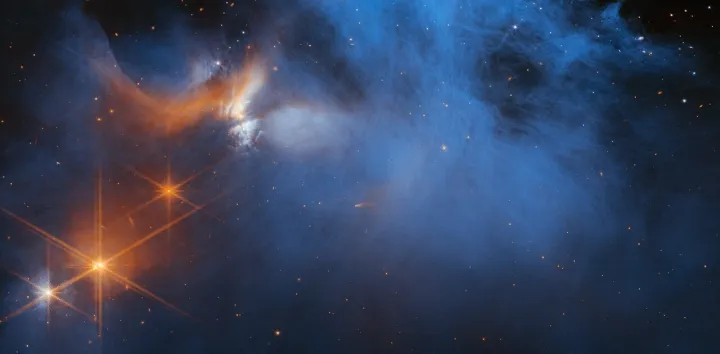Here’s how to build an exoplanet: You start off with a star that’s surrounded by a disk of dust and gas. As the star burns and sends out gusts of stellar wind, the dust in the disk begins to interact and form into clumps. These clumps attract more dust, turning into pebbles, and then into rocks, and the gas helps these rocks stick together. They grow, picking up more and more material and clearing their orbit around the star. These are the first stage of planetary development, called planetesimals.
There’s another important ingredient for growing a planet, though: ice. In the cold clouds of dust and gas, ice forms as a kind of frost on dust grains. These icy grains carry some of the key ingredients for a potentially habitable planet, like carbon, hydrogen, and oxygen. Here on Earth, it’s thought that some of these ingredients could have been brought to our planet by icy comets, but in other systems, these ices could have been present as the exoplanets formed.

Now, researchers using the James Webb Space Telescope have peered into the cold, dark depths of a molecular cloud to look for these ices which could form the basis for future exoplanets. Looking at a cloud of dust and gas called Chameleon I they were able to identify ices made from water as well as other molecules like ammonia and methane.
“Our results provide insights into the initial, dark chemistry stage of the formation of ice on the interstellar dust grains that will grow into the centimeter-sized pebbles from which planets form in discs,” said lead researcher Melissa McClure of Leiden Observatory in a statement. “These observations open a new window on the formation pathways for the simple and complex molecules that are needed to make the building blocks of life.”
An important finding was the identification of a complex organic molecule, methanol. Known as the building blocks of life, organic molecules are key to understanding how life may be able to develop in environments beyond Earth.
“Our identification of complex organic molecules, like methanol and potentially ethanol, also suggests that the many star and planet systems developing in this particular cloud will inherit molecules in a fairly advanced chemical state,” said another of the researchers, Will Rocha of Leiden Observatory. “This could mean that the presence of prebiotic molecules in planetary systems is a common result of star formation, rather than a unique feature of our own Solar System.”
The researchers used Webb’s high sensitivity to get spectroscopic data from the molecular cloud, located 631 light-years from Earth. They have further research planned to learn more about the role of ices in the formation of planets and their relationship to habitability.
“This is just the first in a series of spectral snapshots that we will obtain to see how the ices evolve from their initial synthesis to the comet-forming regions of protoplanetary discs,” said McClure. “This will tell us which mixture of ices — and therefore which elements — can eventually be delivered to the surfaces of terrestrial exoplanets or incorporated into the atmospheres of giant gas or ice planets.”



